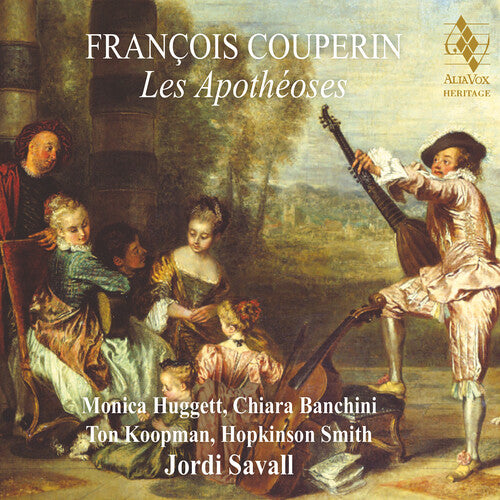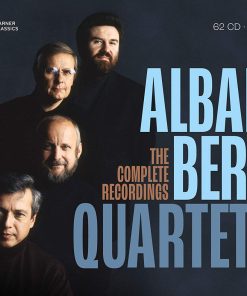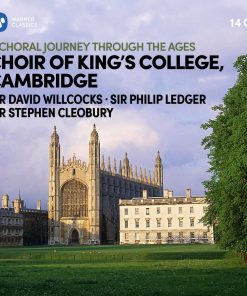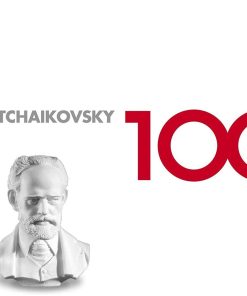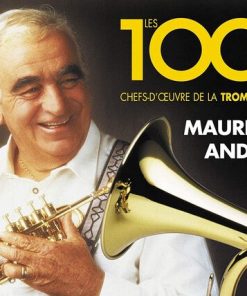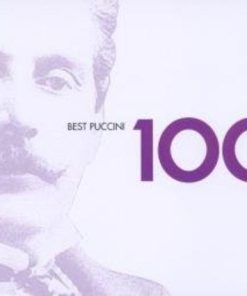COUPERIN: Les Apothéoses – Jordi Savall, Hopkinson Smith, Monica Huggett and others (Hybrid SACD) ALIA VOX
$ 24,99 $ 14,99
Couperin is too easily seen as the tender, graceful and somewhat melancholy composer, whose soft-toned palette was the same as that which served the brush of Watteau. There was another Couperin who was a master of humour and whose claws were sharp. And yet another who was a musician involved in the aesthetic battles of this time and in the avant-garde. There were great battles, like the one to which the lovers of Italy rallied, and which led him to write, at the age of twenty-two or twenty-four, the first sonatas to appear in France. There were skirmishes, like that in which the sworn masters of the guild of minstrels opposed the royal musicians. In each case we find him participating zealously and actively – but also translating his own positions into music with his characteristic skill and lighthearted humour.
LE PARNASSE OU L’APOTHÉOSE DE CORELLI
Grande Sonade, en Trio
1.Corelli au piéd du Parnasse
2.Corelli, charmé de la bonne réception
3.Corelli buvant à la Source D’Hypocrêne
4.Enthouziasme de Corelli
5.Corelli, aprés son Enthouziasme
6.Les Muses reveillent Corelli
5.Remerciment de Corelli (gayement)
CONCERT INSTRUMENTAL SOUS LE TITRE D’APOTHEOSE
Composé à la mémoire immortelle
de l’incomparable Monsieur de Lully
1.Lully aux Champs Elysés
2.Air pour les mêmes (gracieusement)
3.Vol de Mercure aux Champs Elysés
4.Descente d’Apollon
5.Rumeur souteraine
6.Plaintes des mêmes
7.Enlévement de Lulli au Parnasse
8.Acueil entre doux et agard
9.Remerciment de Lulli à Apollon
10.Apollon persuade Lulli et Corelli
11.Air léger pour deux violons
12.Corelli, aprés son Enthouziasme
13.Second air. Corelli
14.La Paix du Parnasse (gayement)
Monica Huggett, Chiara Banchini violons
Ton Koopman clavecin
Hopkinson Smith théorbe · Bernard Hervé récitant
Jordi Savall basse de viole et direction
Fast Shipping and Professional Packing
Due to our longstanding partnership with UPS FedEx DHL and other leading international carriers, we are able to provide a range of shipping options. Our warehouse staff are highly trained to pack your goods exactly according to the specifications that we supply. Your goods will undergo a thorough examination and will be safely packaged prior to being sent out. Everyday we deliver hundreds of packages to our customers from all over the world. This is an indication of our dedication to being the largest online retailer worldwide. Warehouses and distribution centers can be located in Europe as well as the USA.
Orders with more than 1 item are assigned processing periods for each item.
Before shipment, all ordered products will be thoroughly inspected. Today, most orders will be shipped within 48 hours. The estimated delivery time is between 3-7 days.
Returns
The stock is constantly changing. It's not entirely managed by us since we are involved with multiple parties such as the factory and our storage. The actual stock can fluctuate at any time. Please understand it may happen that your order will be out of stock when the order is placed.
Our policy is valid for 30 days. If you haven't received your product within 30 days, we're not able to issue either a return or exchange.
You are able to return a product if it is unused and in the same condition when you received it. It must also still remain in the original packaging.
Related products
MUSIC CDS
MUSIC CDS
MUSIC CDS
MUSIC CDS
MUSIC CDS
MUSIC CDS
